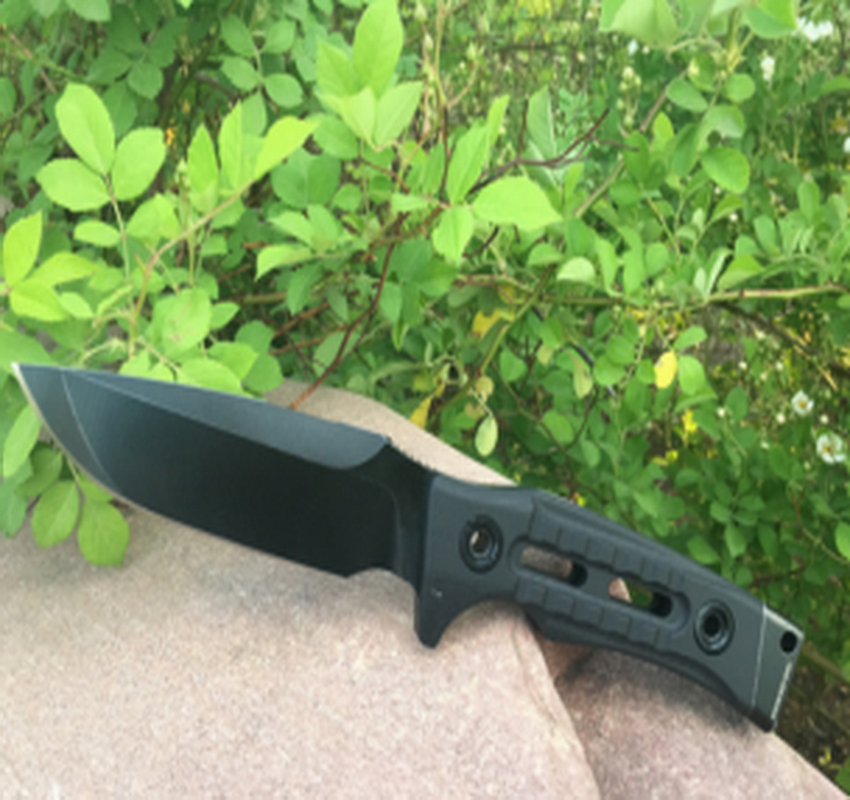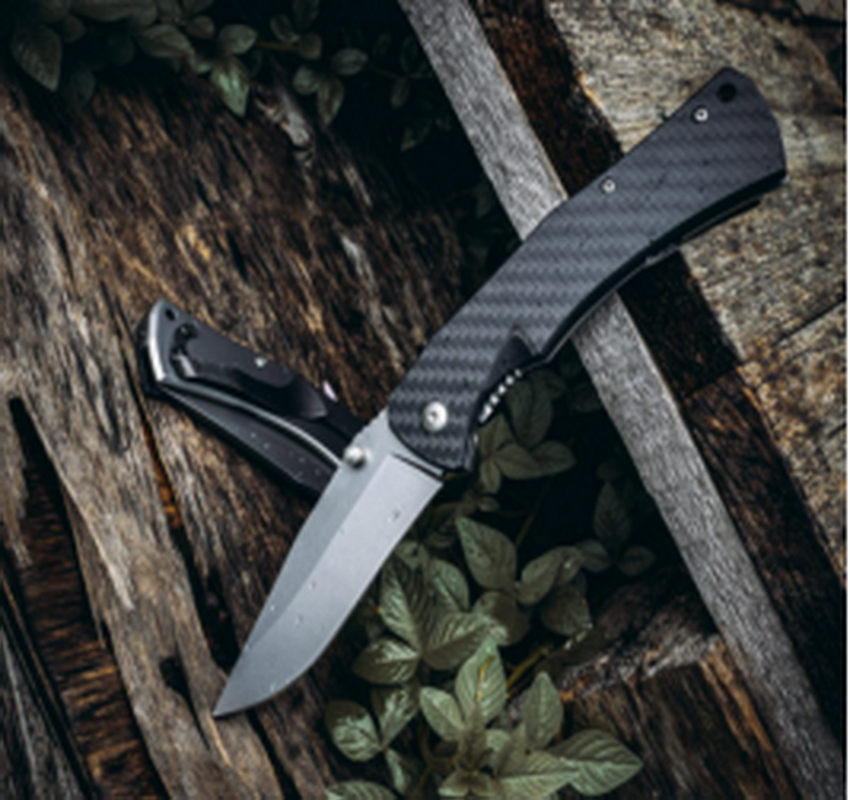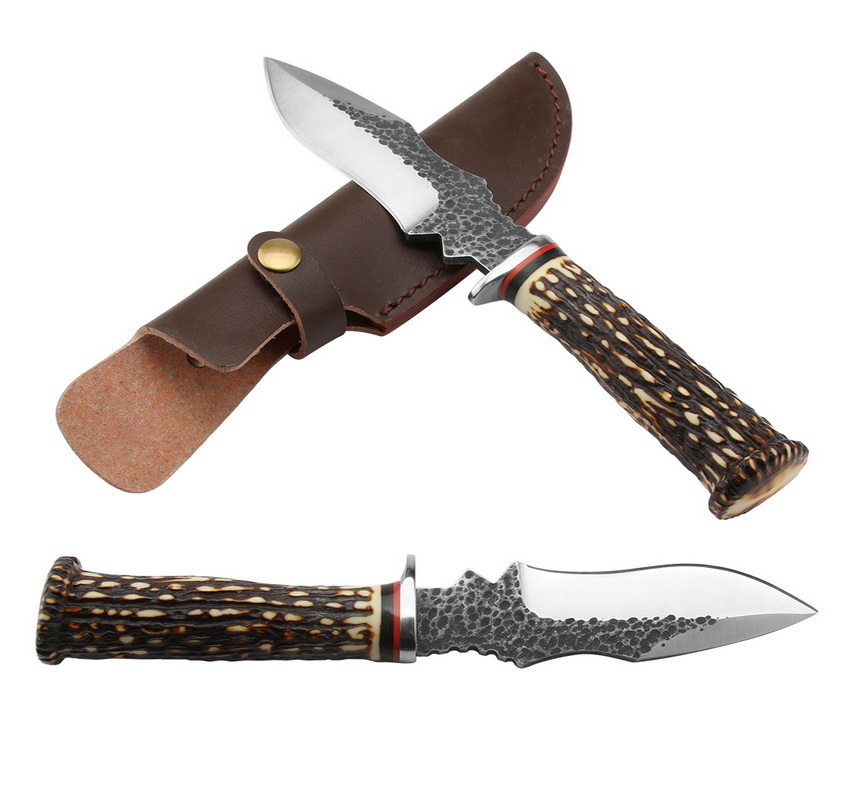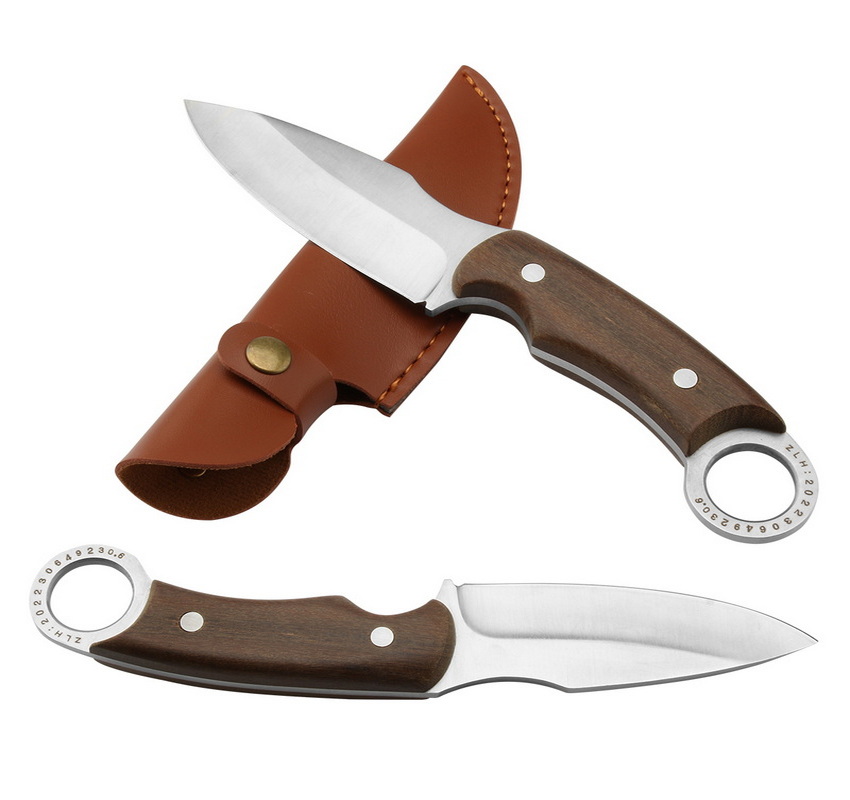![]() Windy
Windy
 WeChat
WeChat
 WhatsApp
WhatsApp
Click:577 seen


10 Different Handles For Outdoor Knives
One of the most important pieces of equipment when choosing outdoor survival gear is your knife, and a good outdoor knife is invaluable in the wilderness. In fact, the type of handle is extremely important to the overall performance and characteristics of the knife, whether it is a tactical knife, a machete, a survival knife or just a collectible. Novice backpackers often think that a knife handle is just an aesthetic design.
Shank materials can be metallic, synthetic or natural, each with its own advantages and disadvantages.
1. Stainless Steel:
Strong stainless steel has excellent durability and corrosion resistance, but is not light weight. Also, stainless steel handles can be quite slippery, so manufacturers must etch them to provide the desired friction. Many times you will see stainless steel used in combination with plastic or rubber to improve grip strength, but stainless steel handles should generally be avoided in EDCs (portable multipurpose knives) or heavy duty knives as it adds too much weight.
2. Alumina:
Anodized aluminum is a very durable material for knife handles. Strong, light, durable, corrosion resistant. It is a low-density metal that provides a nice, heavy feel to the knife without adding too much weight. Properly textured aluminum handles provide a fairly secure grip while feeling comfortable and easy to use for long periods of time.
On the downside, if you use the knife a lot during the cold winter months, the handle may feel cold and uncomfortable due to its heat-conducting properties.
3. Titanium:
Titanium is a light metal alloy, it has the best corrosion resistance of all metals, it is a little heavier than aluminum, but it is still considered a light metal and stronger. Titanium is a rare metal with a warm feel, so it won't leave you cold in the winter like aluminum. It is very strong and flexible, but, compared to stainless steel, both titanium and aluminum are prone to scratches.
Titanium can be given a unique and attractive color through the anodizing process, which is particularly common in custom cutting tools. So it's quite expensive. In addition, it can be textured by sandblasting.
4.Carbon fiber:
Carbon fiber refers to thin carbon wires that are tightly woven and then fixed in resin. Carbon fiber handles are actually reinforced polymers of carbon fiber. A very strong but lightweight material, also quite expensive, although very strong, but fragile. Think of carbon fiber as a bunch of straw stuck together, which is very strong in one direction (far more than steel) but begins to break when stressed in the other directions because it is brittle and will shatter if it is subjected to a violent impact.
You can see some very beautiful patterns in the handle of the knife because of the light reflected from the carbon weave. However, the production of carbon fiber handles is a labor-intensive process, and as a result, it tends to be found only on high-end cutters.
5. Bone:
Bone handles have been used since the dawn of man and are popular among knife collectors. The bones came from animals that died of natural causes, as well as a wide variety of animals, including elephants and giraffes. Despite this, the most common bone used today is that of a cow. In addition to bone, similar materials such as antlers, sheep, cow horns, and ivory (elephant, walrus) are often used.
Of course, many people like bone handles simply because of tradition, and I remember my first knife had a serrated bone handle, which is a beautiful thing. Bones can be dyed for bright colors and textured to make them easier to grip.
Bone handles are slippery when used, and some bones are easy to deform and crack. Temperature, light and moisture can affect the characteristics of bone handles.

6. Wood:
Like bone, wood has been used as a handle for comfortable grip since the advent of knives. High quality wooden handles are durable and add a lot of beauty to knives, making them popular with collectors. Knife handles are made of different types of wood, so you must choose wisely according to how you use the knife and the environment.
If you're going to use it a lot in a wet environment, you're going to use hardwood or wood-infused plastic. Stabilized wooden handles, usually plywood made from birch, are injected with polymer resin and compressed under high pressure to create a very dense and durable material that still has a natural aesthetic. Of course, the price of wooden handles varies, depending on the type and scarcity of wood used. But wooden handles are not resistant to high temperatures.

7. Leather:
Occasionally you'll see knives with leather handles, but leather handles are rare these days. Leather handles are made by wrapping the leather tightly around another material and then polishing them to create an attractive look.
While leather handles look good, they do lack durability and strength, and more often you'll see leather used to decorate handles made of bone, wood, or other natural materials.
8. Phenolic resin (Micarta):
Thin linens soaked in phenolics, an organic compound called phenol, are light, strong and dressy looking. Originally used as an insulator for electric currents, it soon became one of the best materials for making knife handles.
The material itself has no surface texture, is very smooth and needs to be carved out of various textures, which makes it expensive. It's hard, it doesn't scratch and it works really well as a handle.
9.Glass fiber composite material:
Glass fiber composite material is a laminated composite material made of glass fiber. It has very similar properties to carbon fiber (slightly less powerful), but at a much lower cost. Tool makers take fiberglass cloth layers and soak them in resin, then compress them and bake them under pressure, making them very strong and light. Floral patterns add texture to the handle for a firm, comfortable grip.
Because it is durable, lightweight and available in a variety of colors, it is currently one of the most important materials used to make tactical knife handles.
10.Glass fiber reinforced nylon (FRN/Zytel):
Zytel is a glass fiber reinforced nylon (FRN), a thermoplastic material introduced by DuPont in the United States. Zytel is very strong, resistant to bending, wear resistance, and almost no breakage. What's more, it's cheap. The nylon fibers are arranged at will, making it very strong in all directions. It is inexpensive, can be injected into any desired shape and textured in a variety of ways during production. All are well suited to mass manufacturing and therefore low cost.
Knife handle is not just an aesthetic design, different types of knife handle materials have their own characteristics and advantages and disadvantages. Hopefully this will help you determine the best handle material for your needs.
We specialize in OEM & ODM knives. Including Folding knives,Outdoor hunting knives, Survival knives, diving knives, Pocket knives, Flying knives, Diving knives, Machetes, Multi-functional knives and Related outdoor accessories products.
We also have a professional design team, can design changes for you, to create more new styles.
Can be customized according to your request any style of knife.
We are the original manufacturer of pocke knife. Our factory has all the above production conditions.
Please feel free to contact us for cooperation, thank you!
